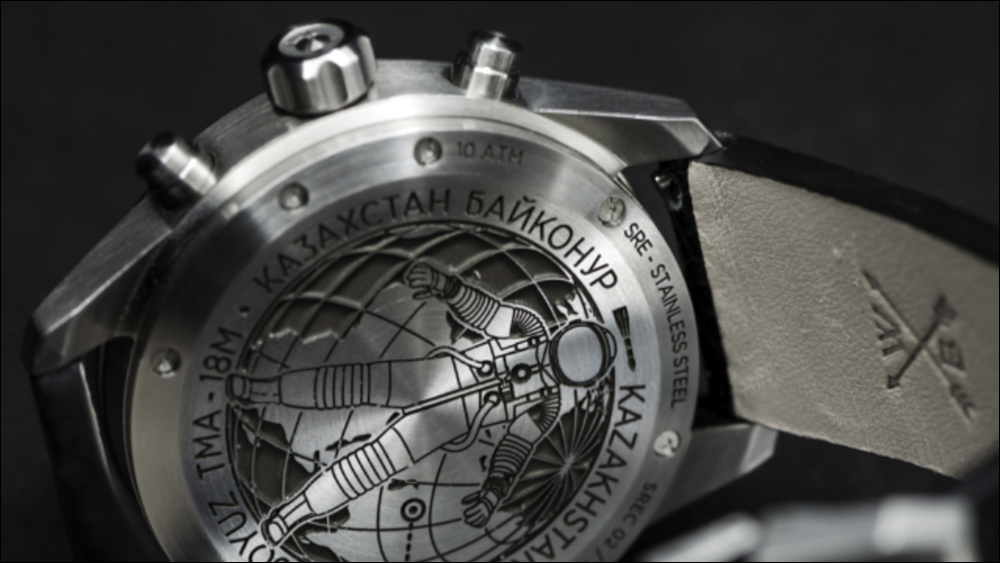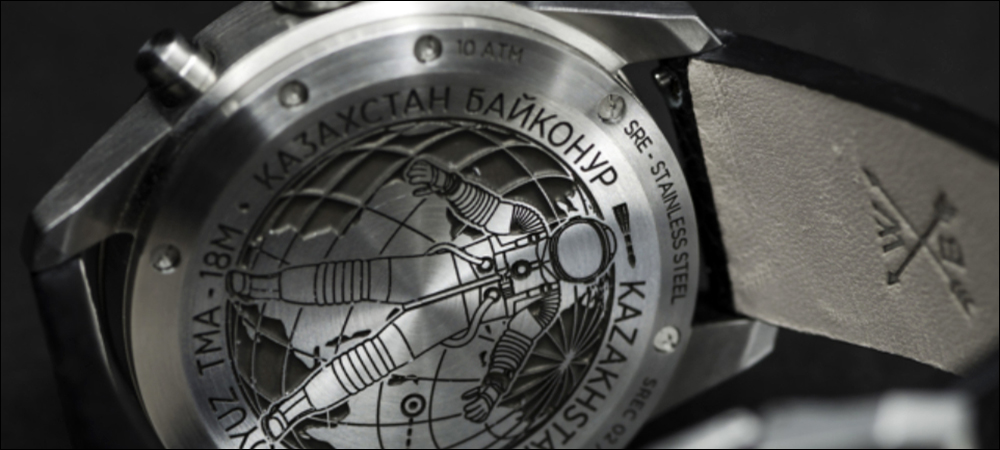German technology company Neosid, which specializes in RFID tags for some of the smallest and most challenging form factors, is providing a Near Field Communication (NFC)-based device that fits into a Swiss watch to enable wireless connectivity. The NFC inlay enables wearers of Werenbach‘s line of watches, made from Russian rocket components, to access content with the tap of a smartphone, and to thus learn about its connection to space exploration.
The watch design comes with a story, says Patrick Hohman, Werenbach’s CEO and founder. “We are manufacturing watches made from real space rockets,” he explains. The company builds a small piece of salvaged rocket into each of its Mach 33 and Soyuz watches. To bring the story to watch wearers, Werenbach deployed the NFC-based solution. The specially designed 13.56 MHz NFC transponder, compliant with both the ISO 14443 and 15693 standards, is engineered inside the face of the watch to operate at a distance of several inches, even with the presence of the watches’ metal case.

Werenbach’s Mach 33 watch
Neosid develops miniaturized RFID components for what it calls “the toughest jobs,” including for use in metallic environments. Its products include LF, HF and UHF RFID transponders for such use cases as equipment and surgical tool management. For electromagnetic compatibility in small metallic items, the products are built leveraging ferrites, a ceramic material created from the combination of iron(III) oxide and other metallic elements. The challenge for Werenbach, according to Yilmaz Benzer, Neosid’s sales and marketing director, was to build connectivity into the watch without changing the aesthetic.
The Mach 33 watch series was launched two years ago, following three years of development, to include NFC functionality. “Our task was to develop a very thin NFC transponder into the face style of the wristwatch,” says Matthias Höß, Neosid’s research and development manager, so that each watch’s owner has contact with the International Space Station (ISS). “Many of our customers were totally thrilled by it,” states Hohmann, who first conceived of the idea in 2010.
 Two years later, Hohmann trekked through Kazakhstan to the site where Soyuz rocket engines typically return to Earth following launches in Samara, Russia. Hohmann has collected material from the rockets’ steel power turbines or aluminum outer shell. These materials are then smelted to create part of the watch face. He wrote a novel about the concept, titled Werenbachs Uhr (Werenbach’s Watch). For Mach 33 buyers, it means they have bragging rights that their watch has been in orbit. But the goal was to provide that story so they and their friends could access it by viewing the centerpiece of the launches—namely, the ISS.
Two years later, Hohmann trekked through Kazakhstan to the site where Soyuz rocket engines typically return to Earth following launches in Samara, Russia. Hohmann has collected material from the rockets’ steel power turbines or aluminum outer shell. These materials are then smelted to create part of the watch face. He wrote a novel about the concept, titled Werenbachs Uhr (Werenbach’s Watch). For Mach 33 buyers, it means they have bragging rights that their watch has been in orbit. But the goal was to provide that story so they and their friends could access it by viewing the centerpiece of the launches—namely, the ISS.
Neosid first started working with Werenbach on the NFC connectivity five years ago. For the two companies, the technical challenges for the system were fairly daunting. Due to the metallic environment, the small form factor and aesthetic demands, a standard inlay would not be possible. Werenbach made some modifications to the watch, so that the face style is made of plastic material, while the small metallic plate in the dial is the piece that has visited space. “It’s a critical environment,” Benzer says. “The old watch was out of metal.”
Neosid tested various transponders that could be very small and flat. “Then, in combination with designing the watch in a special shape, we got the right solution,” Benzer recalls. The transponder is located on the backside of the face dial, Höß explains, and thus remains invisible, though it transmits a signal when interrogated through the plastic dial face. The antenna is rounded to offer a better electrical characteristic than other designs, he adds, and the inlay leverages a ferrite shielding layer so that it can operate well despite the watch’s housing.

Patrick Hohman
With the Mach 33 watch, the NFC read range is typically up to about 5 centimeters (2 inches). “It’s a very comfortable reading distance,” Höß says, “enough space to have no need for direct contact with the watch.” That allows for protection of the watch face as well, because physical tapping isn’t necessary. Neosid attributes the long read range to its use of the ferrite core.
When a user holds a phone within range of the watch, the NFC interrogator built into the phone captures the tag’s unique ID number and opens a URL, at which the watch owner can access a real-time view through the space station’s window. Neosid uses NXP Semiconductors‘ ICODE chips, as well as EM Microelectronic chips. The IC on the ferrite core measures 1.4 millimeters by 1.2millimeters by 0.5 millimeters (0.06 inch by 0.05 inch by 0.02 inch).

Yilmaz Benzer
Since the watches’ release, customers have used the NFC functionality to view the ISS’s content, as well as access data regarding other products. The next generation of watches are now being planned, the companies report, which could include the use of additional rocket parts. “Our biggest challenge is the material that we use—aluminum and steel,” Hohmann says. These new versions of the watch may prove even more challenging for NFC, he predicts.

Matthias Höß
“We have decided to focus on mechanical movements,” Hohmann states, “and to only use dials that are entirely made from real space rocket aluminum.” That means NFC might not operate in such an environment, he notes, adding, “There is no simple way to separate the NFC inlay from the watch face without destroying its design.” Therefore, the company is still determining whether the NFC functionality will be possible in the next design. “Of course, we hope that microtechnology will solve this challenge soon. That would definitely be interesting.”
Neosid offers its technology for use in tracking surgical tools via HF or UHF RFID, and its transponders are also being developed for deployments in the dental industry. The company’s NeoTAG transponder is currently being used to monitor the maintenance of equipment, such as fire department and safety assets. This includes lifting gear and slings, as well as components for tunnel and bridge construction, foundries, shipbuilding and aerospace.


